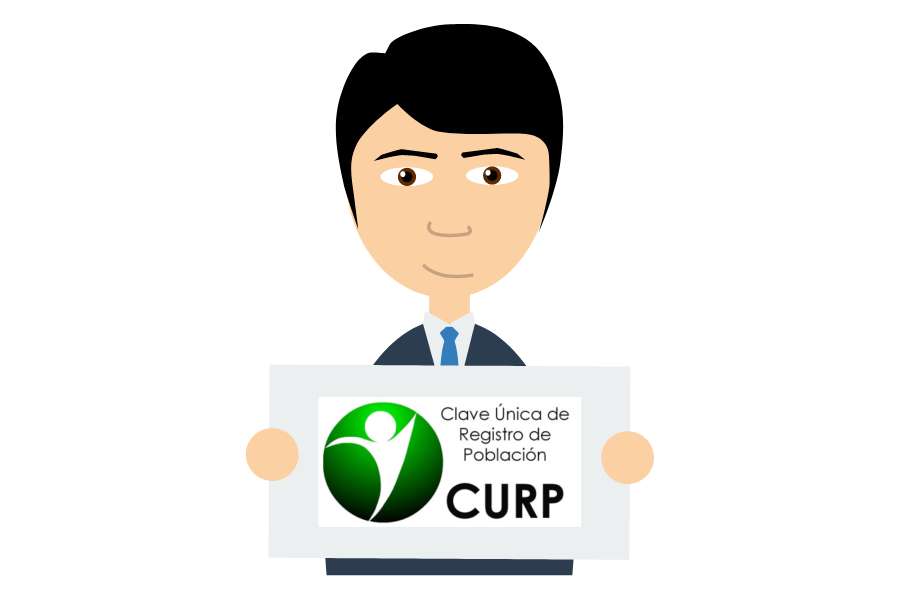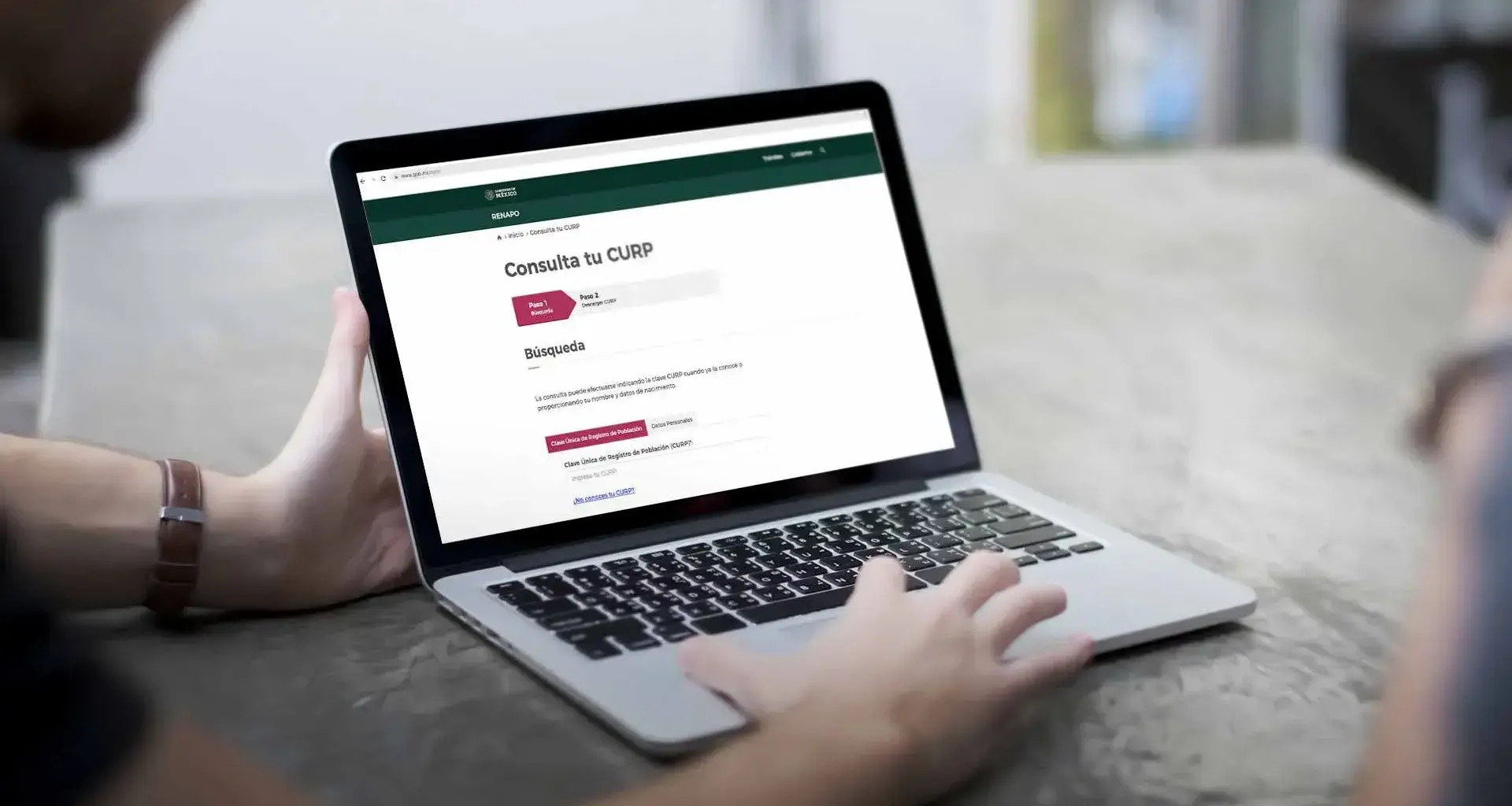The Unique Population Registry Code, better known by its acronym CURP in Spanish, is used as an ID number for people residing in Mexico, whether they be Mexican or foreigners, as well as for Mexicans living abroad.
It is unique and no one else in the country can have the same CURP, hence its importance, explains José Carlos Cid Hernández, a professor at Tec de Monterrey’s Hidalgo campus.
“It’s an 18-character alphanumeric code, which means it’s a combination of letters and numbers that officially identify each person living in Mexico,” he highlights.
The CURP generates a kind of unique identity code for every Mexican, says the academic, and is used for procedures involving any official document in Mexico, from processing different documents, services, or even bank loans.

What a CURP consists of
The 18 digits that make up the CURP are not generated at random, but rather each one has a special meaning to make each Unique Population Registry Code unique.
To understand what it consists of, we will use the example of Concepción Salgado Briseño, born on June 26, 1956, in the Federal District, known today as Mexico City.
- The first letter and vowel from your first surname. For example, if your surname is Salgado, it would be SA.
- The first letter of your second surname. If your surname is Briseño, it is the letter B.
- The first letter of your given name. If it is Concepción, this is the letter C.
- Year of birth. If you were born in 1956, you are given the number 56.
- Number of your birth month. If you were born in the month of June, it is the number 06.
- The day you were born. If you were born on the 26th, the number on your CURP will be 26.
- This tells us your gender. H is for male, and M is for female. In this case, it is M.
- The code of the state where you were born. For example, if you were born in the Federal District, it is DF. Codes for states can be consulted in the list provided by the National Population Registry (RENAPO) HERE.
- If you were born abroad, we use the letters NE (Nacido en el Extranjero).
- The first internal consonant from your first surname. If your surname is Salgado, that would be the letter L.
- The first internal consonant from your second surname. If it’s Briseño, your CURP includes the letter R.
- The first internal consonant from your given name. If your name is Concepción, it would be the letter N.
- A number that is assigned to your year of birth. If you were born before the year 2000, a number ranging from 0-9 is assigned.
- And if you were born after the year 2000, you are assigned a letter of the alphabet.
- Finally, a control digit is used to avoid duplicates, in case someone else shares the same data.
If I am a foreigner living in Mexico, can I get a CURP?
Yes, as long as foreigners who are living in Mexico have accredited having initiated the procedure to remain in national territory, under the conditions for legal residence determined by the corresponding immigration authority (The National Institute of Immigration or the General Coordinator’s Office of the Mexican Commission for Refugee Assistance), with the exception of the stay referred to in section III, article 52 of the Migration Law (Regional Visitor), explains the National Gazette (DOF).
It’s important to mention that a valid temporary certificate is issued at first until the immigration status of the foreign national is determined, under the terms of the deadlines and requirements established by the regulations in this area.
How and where can I consult my CURP?
You can consult your CURP on the Mexican Government website via two options:
1. Search by CURP. If you already have your CURP, you can make a query by entering your CURP code.
2. Search by personal data. Professor Cid Hernández explains you can do this via names, surnames, date of birth, the Mexican state where you were registered, and even gender (male, female, or non-binary).
When you consult your CURP, you can obtain a certificate, which is a document showing that someone has been assigned a code issued by the Secretariat of the Interior.
The National Gazette (DOF) says that you can print the certificate on white bond paper in color or in black and white, which will be fully valid as proof of having been assigned a CURP for public, private, and financial sectors.
What is a certified CURP?
On October 18, 2021, certain modifications were noted in the National Gazette (DOF) to establish that CURP certificates will now include the wording “Certified CURP.” Depending on the purpose, they may be verified by the Civil Registry Office, the Ministry of Foreign Affairs, or the National Institute of Immigration.
A CURP verified by the Civil Registry Office means this agency has verified that the code is associated with or linked to a Mexican person’s birth certificate and that it has been entered into the National Civil Registry Office Database (BDNRC).
The most important element that verifies certification is the wording found in the bottom right-hand corner of the document, which should say “Certified CURP: Verified by the Civil Registry Office.”
This includes a series of electronic security measures:
- A QR code for mobile devices on the CURP certificate itself, which enables verification of the information contained in the certificate
- A barcode containing the identification number of the ID document
- A two-layer encrypted QR code, located below the certificate, which enables you to verify the image of the CURP certificate
What happens if I don’t have a CURP and would like to get one?
If your Unique Population Registry Code does not appear after searching for it, you need to go to one of the CURP Service Modules located all around the country.
To complete the procedure, you need to present an original and a copy of your ID document (birth certificate, naturalization certificate, certificate of Mexican nationality, diplomatic visa, or immigration document) and a valid official form of photo identification.
If you’re a foreigner, you should go to one of the 32 Representative Offices of the National Institute of Immigration (INM) to request the document.
Procedures that can be carried out with your CURP
Professor Carlos Cid from the Tec’s Hidalgo campus says that there is no exact number so far of procedures that can be carried out with the document, but from a general point of view, a CURP is used to perform administrative tasks in federal, public, state, and municipal agencies, as well as for inclusion in files at companies, schools, and banks, among other things. For example:
- For registering as a natural person with the Federal Taxpayer Registry (RFC) at the SAT.
- For registering with the IMSS and for a vaccination record (including SARS COV 2 at this stage of this pandemic).
- For requesting a passport, military ID, driver’s license, etc.
- For requesting your degree certificate, academic transcript, school record, etc.
- For requesting your birth, marriage, adoption certificate, etc.
- For job applications, personal work records, pay slips, etc.
How do you correct your CURP if it contains a mistake?
“Many people don’t care much about mistakes in their CURP, but this is an issue that can have important implications, including not being able to carry out official procedures,” explains José Carlos Cid.
If you notice that your Unique Population Registry Code contains a mistake in the name, surname, date, place of birth, gender, certificate number, book, page, volume, state, or municipality, or you have more than one CURP, you should go to any one of the CURP Service Modules, or do it electronically or by telephone.
To carry out this procedure, you need official identification such as an INE, passport, military ID, professional license, as well as your birth certificate and nationality certificate.
If you prefer to do it online, it can be done via tramitescurp@segob.gob.mx, by explaining the situation and where the mistake can be found in your CURP, attaching a photograph or scan of your birth certificate and INE, as well as a telephone number through which advisers can get in touch with you.
Corrections can also be requested by telephone on 55 5128 0000 extensions 38198, 38200, 38268, 38270, and 38276. As well as 800 911 1111. Office hours are Monday through Friday from 8 a.m. to 6 p.m.
I live outside Mexico. Can I get a CURP?
If you live outside Mexico and have Mexican nationality, you can get your CURP for the first time. In order to do so, you will have to go to the National Institute of Immigration (INM). If you already have one and for some reason you find yourself outside of Mexico, you can download it at https://www.gob.mx/curp/
READ MORE:





